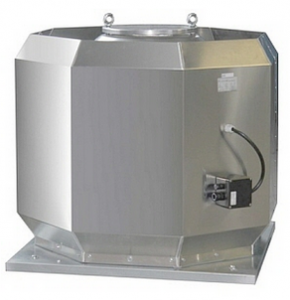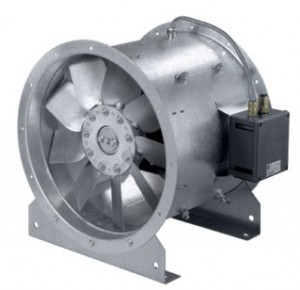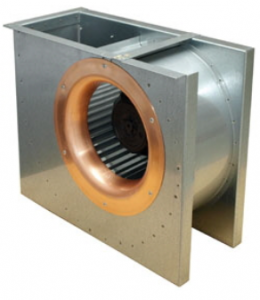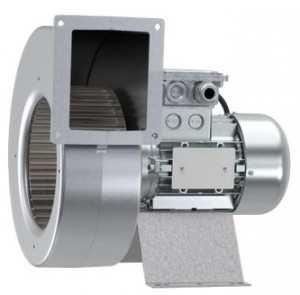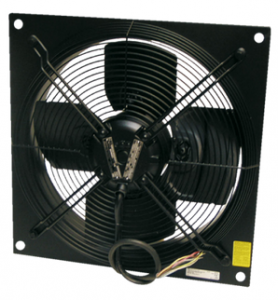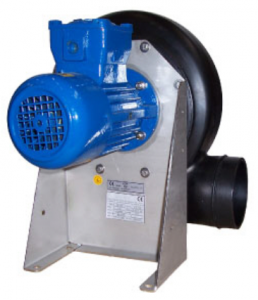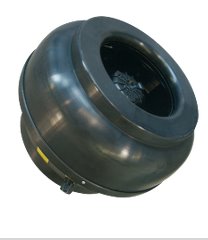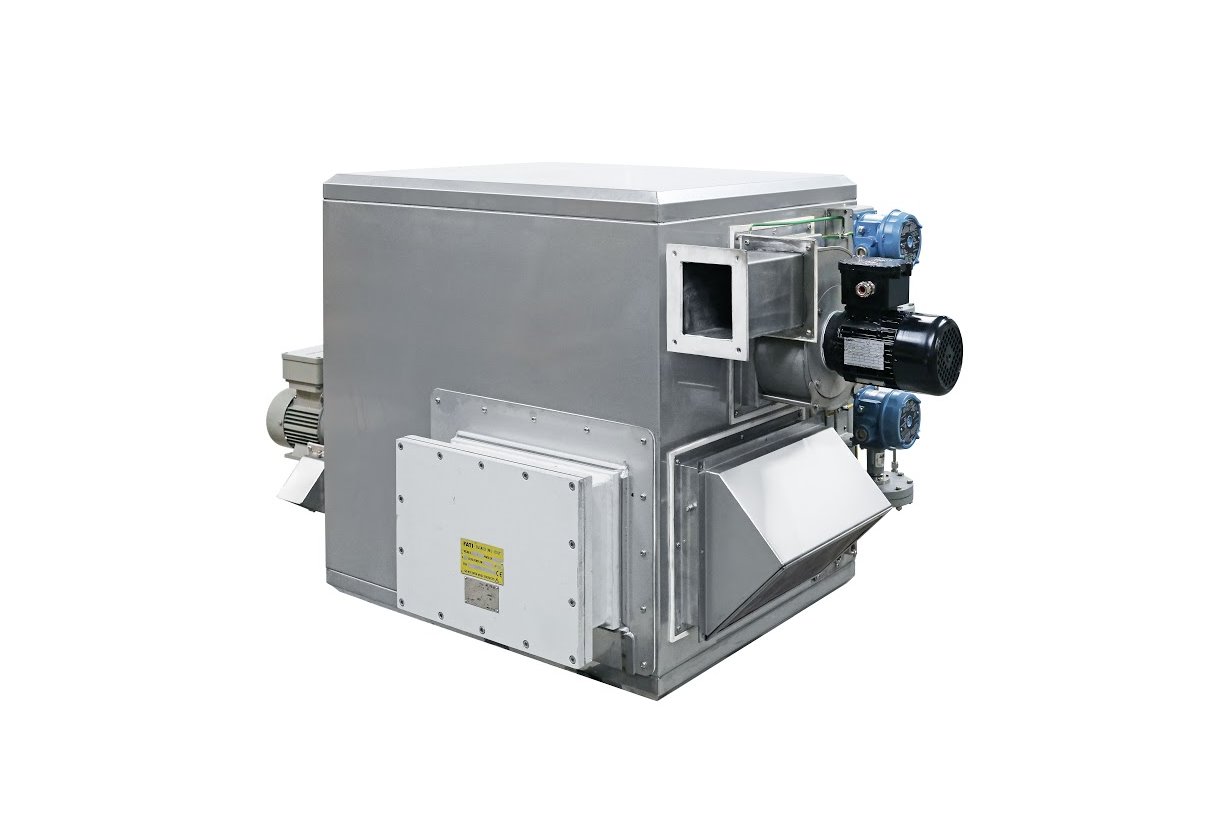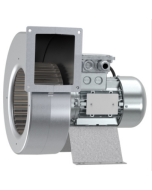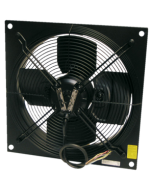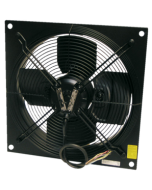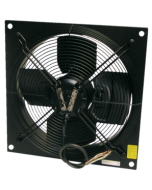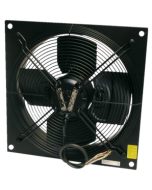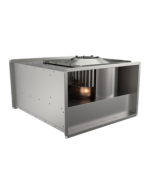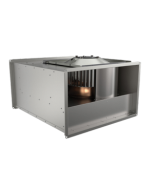ATEX Fans and Explosive Environments
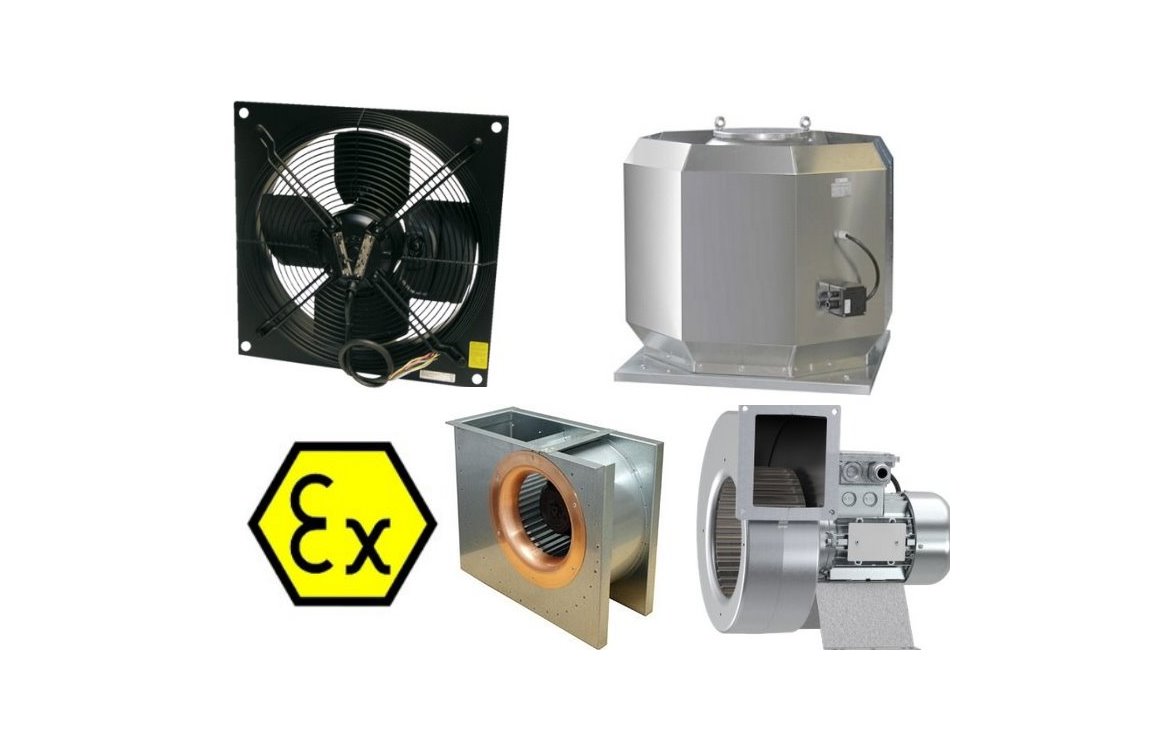
Explosion Proof ATEX Fans
What is often misunderstood is what exactly is a 'potentially explosive environment', and where would you actually need an ATEX fan in an explosive environement, compared to a fan not designed for these sorts of applications. Firstly, explosive atmospheres can be occur in environments where there are flammable gases, mists or vapours, or combustible dusts. With enough of one of these substances mixed with sufficient oxygen in the air, the result is potentially explosive, needing nothing more than the spark from an electric motor or closing switch to cause an explosion. The costs associated to such an occurrence can cause not only significant damage, but also serious injuries, or loss of life. Therefore, the need to prevent releases of certain dangerous substances which can create explosive atmospheres and the need to prevent sources of ignition, are two important ways to reduce the risk. This can be done by using the correct equipment and understanding the dangers and regulations associated. Equipment used in ATEX zoned areas is required to be suitably certified for use the that particular category of zone. Likewise fans used for moving air or for pneumatic conveyance of powers are no different and also need to be certified.
Looking to purchase an ATEX fan for your commercial premises? Click here to browse our range.
Explosive Environments and Regulations
The Dangerous Substances and Explosive Atmospheres Regulations 2002 (DSEAR) outlines the required duties for employers to enforce in order to eliminate or control the risks from explosive atmospheres in the workplace.
What is an Explosive Atmosphere?
According to DSEAR, an explosive atmosphere is identified as the mixture of dangerous substances (gases, vapours, mist or dust with air), under atmospheric conditions. With contact to ignition, combustion spreads to the entire unburned mixture and can result in explosion and harm to the workplace. These atmospheric conditions present are commonly referred to as 'ambient temperatures and pressures', which is temperatures of –20°C to 40°C and pressures of 0.8 to 1.1 bar.
Where can Explosive Atmospheres occur?
- Work places which produces and store foodstuffs (flour, cereals, grains, etc.) such as (powder silos, warehouses);
- Farms;
- Painting workshops (including vehicle spray painting workshops);
- Carpentry workshops;
- Petrochemical plants;
- Fuel, gas or solvent storage and handling facilites
- Laboritories and research facilites
- Energy production plants (power stations);
- Pumping stations;
- Holds of cargo ships;
- Within big fuel tanks/ drums and road tankers;
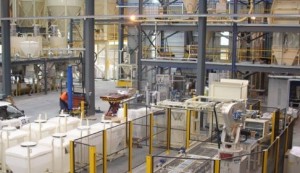
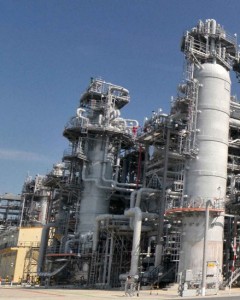
Underground and surface mines.
Employers hold the responsibility to classify these potentially explosives areas into zones. DSEAR provides a ' formula' to the classification of each product. This can be broken down to see what environment the product is designed for. In regards to ATEX fans, the categories and ratings can be seen below. For further information on the protection ratings, refer to the 2002 Dangerous Substances and Explosive Atmospheres Regulations.
Identification for atex explosion proof fans
Zoning Definition and Equipment Suitability
| Zone | Description | Equipment Suitability |
| 0 | A place in which an explosive atmosphere consisting of a mixture with air of dangerous substances in the form of gas, vapour or mist is present continuously or for long periods or frequently. | 1G |
| 1 | A place in which an explosive atmosphere consisting of a mixture with air of dangerous substances in the form of gas, vapour or mist is likely to occur in normal operation occasionally. | 2G |
| 2 | A place in which an explosive atmosphere consisting of a mixture with air of dangerous substances in the form of gas, vapour or mist is not likely to occur in normal operation but, if it does occur, will persist for a short period only. | 3G |
| 20 | A place in which an explosive atmosphere in the form of a cloud of combustible dust in air is present continuously, or for long periods or frequently. | 1D |
| 21 | A place in which an explosive atmosphere in the form of a cloud of combustible dust in air is likely to occur in normal operation occasionally. | 2D |
| 22 | A place in which an explosive atmosphere in the form of a cloud of combustible dust in air is not likely to occur in normal operation but, if it does occur, will persist for a short period only. | 3D |
Types of Protection
Gas | Dust | ||||||||||||||||||||||||||||||||||||||||||||||||
|
|
Groups
I Electrical equipment intended for use in mines susceptible to firedamp~
II Electrical equipment intended for use in places with an explosive gas atmosphere other than group I
III Electrical equipment intended for use in places with an explosive dust atmosphere other than group I
Gas GroupIIA Propane | Dust GroupIIIA Combustible flyings |
Level of Maximum Surface Temperature
T1 450°c
T2 300°c
T3 200°c
T4 135°c
T5 100°c
T6 85°c
With these ratings and categories in mind and when looking at certain ATEX explosion proof fans, it is easier to understand more about a product range and the ATEX zone type that the fan is certified and suited to.
Interested in the ATEX range?
Inline Ducted ATEX fans
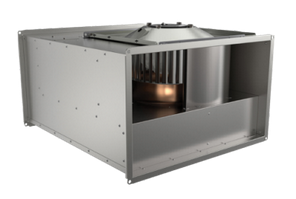
II 2G Ex e IIB + H² T3 Gb
- (II) Suitable for common surface application
- (2G) Suitable for zone 1
- (Ex e) Increased saftey mechanisms
- (IIB) Suited to applications with Ethylene
- (H²) Also suitable for applications with Hydrogen
- (T3) Max surface temperature of 200°c
- (Gb) Gas equipment protection level
Roof EX fans
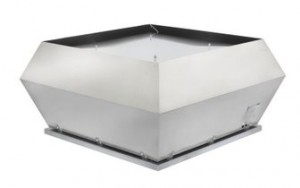
DVEX
II 2G c Ex e IIB T3
- (II) Suitable for common surface application
- (2G) Suitable for zone 1
- (Ex e) Increased saftey mechanisms
- (IIB) Suited to applications with Ethylene
- (T3) Max surface temperature of 200°c
DVV-EX
II 2G c IIB T4
- (II) Suitable for common surface application
- (2G) Suitable for zone 1
- (c) Increased constructional saftey mechanisms
- (IIB) Suited to applications with Ethylene
- (T4) Max surface temperature of 135°c
Medium Pressure Axial Fans
AXC-EX
II 2G c Ex d IIC T4 Gb
- (II) Suitable for common surface application
- (2G) Suitable for zone 1
- (c) Increased constructional saftey mechanisms
- (Ex d) Flameproof
- (IIC) Suited to applications with Hydrogen and Acetylene
- (T4) Max surface temperature of 135°c
- (Gb) Gas equipment protection level
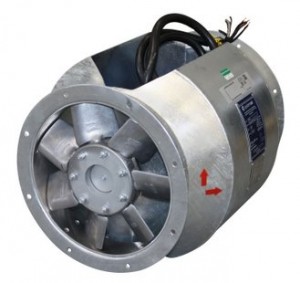
II 2G c Ex de IIC T4 Gb
- (II) Suitable for common surface application
- (2G) Suitable for zone 1
- (c) Increased constructional saftey mechanisms
- (Ex de) Flameproof and increased saftey mechanisms
- (IIC) Suited to applications with Hydrogen and Acetylene
- (T4) Max surface temperature of 135°c
- (Gb) Gas equipment protection level
Centrifugal Explosion Proof Fans
II 2G 3G Ex e T1 T2 T3
- (II) Suitable for common surface application
- (2G and 3G) Suitable for zone 1 and zone 2
- (Ex e) Increased saftey mechanisms
- (T1, T2, T3) Max surface temperature of
either 450°c, 300°c, 200°c, respectively
II 2G 3G Ex de IIA IIB T1 T2 T3 Gb
- (II) Suitable for common surface application
- (2G and 3G) Suitable for zone 1 and zone 2
- (Ex e) Flameproof and Increased saftey mechanisms
- (IIA and IIB) Suited to applications with propane
and ethylene - (T1, T2, T3) Max surface temperature of either
450°c, 300°c, 200°c, respectively
Low Pressure Axial EX Fans
AW-EX
II 2G c Ex e IIB T4 T3
- (II) Suitable for common surface application
- (2G) Suitable for zone 1
- (c) Increased constructional saftey mechanisms
- (Ex e) Flameproof and Increased saftey mechanisms
- (IIB) Suited to applications with ethylene
- (T4 or T3) Max surface temperature of either
135°c, or 200°c, respectively
Plastic EX Fans
II 2G c Ex e IIB T3
- (II) Suitable for common surface application
- (2G) Suitable for zone 1
- (c) Increased constructional saftey mechanisms
- (Ex e) Flameproof and Increased saftey mechanisms
- (IIB) Suited to applications with ethylene
- (T3) Max surface temperature of 200°c
RVK-EX
II 3G Ex d IIB T4
- (II) Suitable for common surface application
- (3G) Suitable for zone 2
- (Ex d) Flameproof
- (IIB) Suited to applications with Ethylene
- (T4) Max surface temperature of 135°c
For further information on ATEX clasifications or products on the Puravent range including ATEX heaters, please visit the Puravent website.Or email further enquiries at [email protected]

